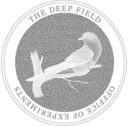CREAM at Westminster School of Arts hosts The Deep Field Project which was established with key partners and continues to develop new and exciting relations with a range of organisations Internationally. Scroll down for more information.
Founding Partners

Office of Experiments
Office of Experiments (2004), was founded by Neal White as an independent research network in order to coordinates art projects with academics, activists, enthusiasts in areas of mutual concern outside of the University. The Deep Field was used to describe a number of inquiries initiated by Office of Experiments as part of its ongoing developments in 2016. White states; “I see the The Deep Field Project at CREAM as an experimental model for artist led research across disciplines, including the discipline of life, that is being tested ‘inside the institution’. It is an exploration of artistic research autonomy, and the potential of being un-disciplined in order to apprehend and investigate critical issues of our times collectively. It dovetails with earlier transdisciplinary initiatives, such as ‘Experiments in Art and Science’ [EAS] a research group initiated with Nicola Triscott (Arts Catalyst) and Tom Corby (now CSM, UAL) whilst we worked together at CREAM’. In addition to close ties with ongoing projects led by White, Office of Experiments project documentation, including The Mike Kenner Archive, are situated in the research studio.

The Deep Field Project, as is evident throughout this site, has close ongoing links and a formal memorandum with Arts Catalyst. Dr Nicola Triscott was founder of Arts Catalyst in 1994. She was appointed Principle Research Fellow at CREAM (2016-18) as a result of her Internationally acclaimed leadership on interdisciplinary research ecologies in art and curating, allowing for close integration between Arts Catalyst, the University and CREAM. This partnership continues, with Arts Catalyst Art/Science Resource Centre located in our studio, and a number of recent Assemblies and projects organised and coordinated with Arts Catalyst hosted by The Deep Field Project. With Arts Catalyst moving to Sheffield in the near future, The Deep Field Project will continue to provide a formal bridge between our organisations, and a London base with planned publications and exhibitions in development. Nicola Triscott is now CEO of FACT, Liverpool.
The Incidental Unit was formed after an ‘incidental meeting’ was initiated by Barbara Steveni, Neal White and Tina O’Connell at Royal College of Art in 2016, then later developed into a formal structure organised with Gareth Bell-Jones (flattimehouse.org) and Marsha Bradfield (artist, researcher at Chelsea College of Art, UAL) in 2016-17. The aim of these meetings was to informally share information about the Artist Placement Group (1966-89), as well as O+I (1989-2009), whose revolutionary work on ‘the artist placement’ and the idea of being incidental within a societal context remained an urgent concern for all. The meetings have shared just one open agenda item; ‘unfinished business’. The meeting structure evolved in intention and purpose to become the Incidental Unit, with the aim of reconnecting the rigorous approach of APG with wider concerns around the brief given to socially engaged art today. IU have since hosted a wide range of artists, collectives and others who are given a critically supportive space in which to discuss and exchange their ideas without the expectations or evaluative frameworks of an artistic commission, gallery briefing or social project. The Incidental Futures Project was financially supported by CREAM and The Incidental Unit has ongoing links to The Deep Field Project.
International Partnerships
The Deep Field Project has many International links, some of which are based on working relationships established by our Project Investigators. These include both individuals working independently, such as Rob La Frenais, or within University departments, museums or projects, as well as formal links with International arts organisations and networks with whom we are discussing projects.

Kunsthall Trondheim
The Deep Field Project is delighted to be working with Director of Kunsthall Trondheim, Stefanie Hessler, who was recently appointed a research associate at CREAM. We are in the midst of developing new work for exhibition for the future program in Norway 2020, which forms part of an ongoing research partnership beyond that.

The Target Studio for Creative Collaboration at Weisman Art Museum, University of Minnesota (USA) is a unique museum space dedicated to collaborations between artists and scholars. It is a workplace, a convening space, a laboratory, a gallery, and a classroom. It hosts workshops, discussions, exhibitions, performances, and symposia. It is dynamic, evolving, and unpredictable, as all true collaborations are. It is currently collaborating with The Deep Field Project on The Habitability Project.

Amsterdam (NL) based zone2source.net is an International platform for art, nature and technology commissioning projects for artists inside and outside of the glass pavilions of the Amstelpark, using this environment as a living lab. Zone2Source is concerned with a return to the source to observe and experience anew in order to explore new relations between humans, nature and technology. Zone2source recently commissioned Office of Experiments project examining GM Mosquitoes, and together with Arts Catalyst, and CREAM researchers, we are exploring Amstelpark potential as a Test Site in 2021-2.


The Collaborative Research Center SFB1258: Neutrinos and Dark Matter in Astro- and Particle Physics is led by Prof. Dr. Elisa Resconi and Prof. Dr. Stefan Schönert, physicists at the Technical University of Munich (TUM) who have collaborated closely with Deep Field Project coordinator and investigator Jol Thoms on a number of international projects since 2017. The SFB1258 Research Group focuses on fundamental physics, where the ‘weak interaction’, one of the four fundamental forces of nature, is central, but they also have a very keen interest in supporting art-science relationships and crossovers. Thoms has a number of pedagogical, artistic, and experimental documentary projects ongoing with them.

http://www.pacific-neutrino.org/
The SFB1258 hosts Thoms’ developing Radio Amnion project, a multi-year networked sound platform that will be attached to the submerged ‘P-ONE’ neutrino telescope located 2.6kms below the surface of the Pacific Ocean and 300 kms off the west coast of Vancouver Island, Canada. SFB1258 is collaborating with Ocean Networks Canada, a consortium of west-coast Canadian University science departments who monitor marine life and seismology all across Canada. The Pacific Ocean Neutrino Experiment, ‘P-ONE’ also shares space with the SFB42 artist group from Munich’s Akademie der Bildenden Kunst, whom Thoms regularly collaborates with through the #eco_techno_cosmo_logic workshops he leads, for a unique remote exhibition underwater: UNDERCURRENTS.